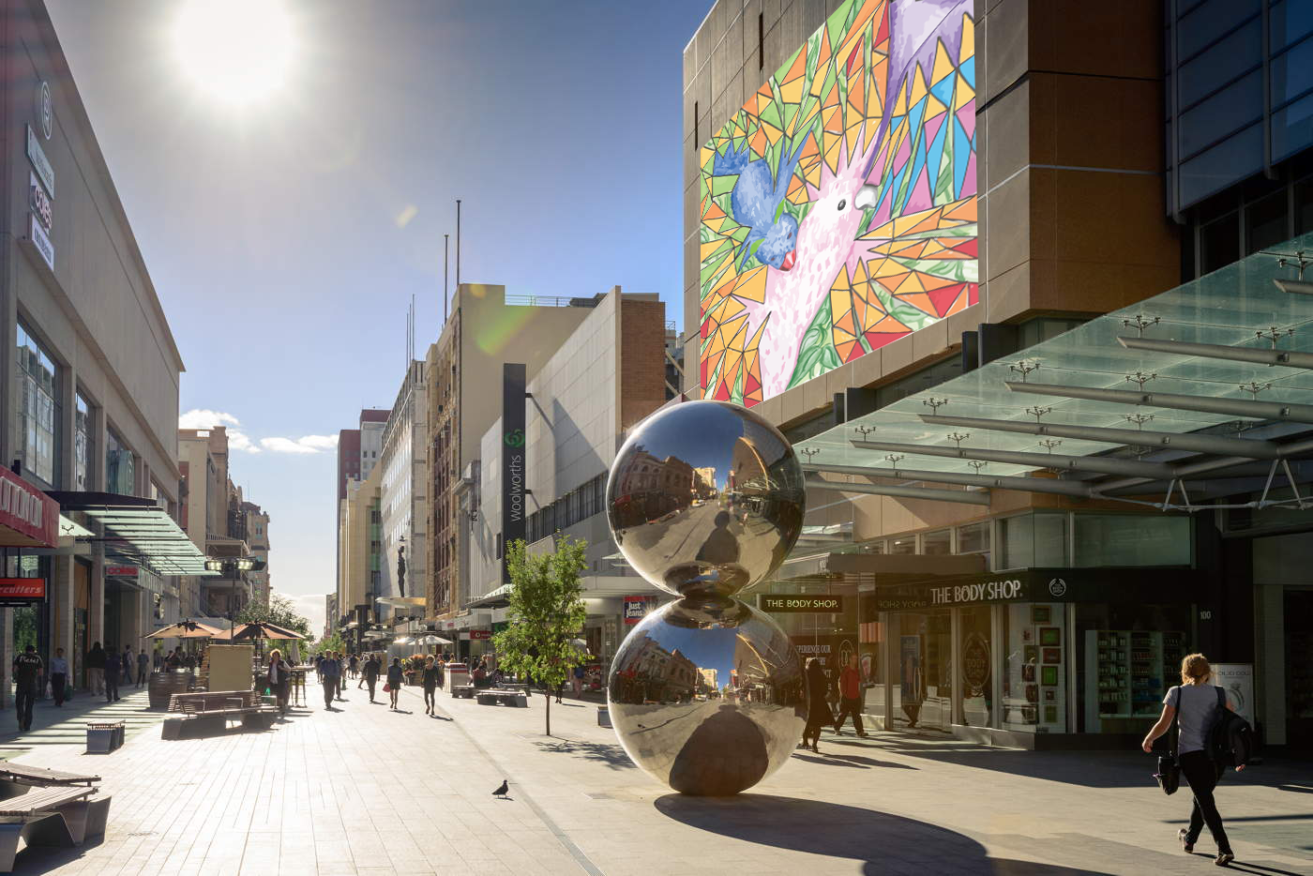Creating art for energy’s sake
Artistic energy will take on a whole new meaning in Adelaide if an American company has its way.

An impression of how a BISTEG installation could look. Supplied image
Arizona-based BISTEG wants to erect locally created art works that will shade the sides of city buildings while also generating electricity. If all goes to plan, there will be 50 pieces in place by 2020, each measuring 1000 square metres and reducing the buildings’ combined carbon emissions by a projected 17,000 tonnes a year.
All going to plan includes first winning the State Government’s Low Carbon Entrepreneur Prize. BISTEG was awarded $10,000 to develop its concept as one of the 11 finalists, and key personnel are in Adelaide this week to showcase the technology and talk with potential partners.
BISTEG stands for Building Integrated Solar Thermal Electricity Generation, which sums up what it does.
Thermal electricity generation (TEG) is an alternative way to create solar power that has the potential – and at this stage it is very much a work in progress – to complement and supplement traditional solarpower generated by photovoltaics (PV) panels used on rooftops. The limitations lie in the output and thus the efficiency.
“Right now TE generators are where PV was about 10 to 15 years ago in terms of efficiencies and costs but they are heading in the exact same direction that PV was,” said Chief Technical Officer Payson Seager. “It’s getting cheaper, it’s generating more power and we want to be ready to make use of it when the time is right.”
TEG is sometimes used to make use of wasted heat, such as in engines, but Seager isn’t aware of anyone using building integrated TEGs with direct sunlight as the source of heat. What BISTEG is now seeking to patent in the US is a combination of that technology and the ability to integrate it into buildings in an aesthetic way.
“PV on the roof is not enough if you want a building to reach carbon neutrality; you need to use the sun hitting other parts of the building as well,” Seager said. “But people don’t want to use PV panels on the sides of buildings because they are too ugly. They are just black panels that can’t be customised.”
The BISTEG system can be customised because the surface comprises acrylic lenses that can be cut to any shape and dyed any colour, creating a stained glass affect.
Behind the façade is an array of semiconductors – devices that generate electricity from differences in temperature. The direct sun heats one side of each device, while the other side is kept close to ambient temperature by air flowing from the ground in the space between the façade and the building wall.
The idea was developed at Arizona State University, where Seager is a student and his father Tom, the company’s CEO, is an associate professor in Sustainable Engineering. The university has licensed the technology to BISTEG, which in turn is going to install a trial wall on the side of the Sustainable Engineering building.
The company has high hopes for Adelaide and has already arranged meetings with a couple of local architects. “We are keen to showcase it here because you have a carbon neutrality goal,” Seager said. “In the US, carbon neutrality and net zero is celebrated on a building-by-building basis. Adelaide is pursuing carbon neutrality as an entire city.”
If support, funding and partners can be found in Adelaide, the aim is to have a local artist and tradespeople create a five square metre system that can be tested on a range of different buildings facing in different directions across a full year to generate data on performance.
BISTEG has joined other finalists in South Australia’s Low Carbon Entrepreneur Prize in Adelaide this week for Design Week, as part of Open State. This afternoon, the 11 finalists will pitch their ideas in front of a live audience to the judging panel, who will decide and announce the winner/s of the $150,000 prize. Registrations for this event, starting at 3pm, are still open.
Solstice Media has partnered with the South Australian Government to provide information about the transition to a low-carbon economy. Read more stories like this here.




